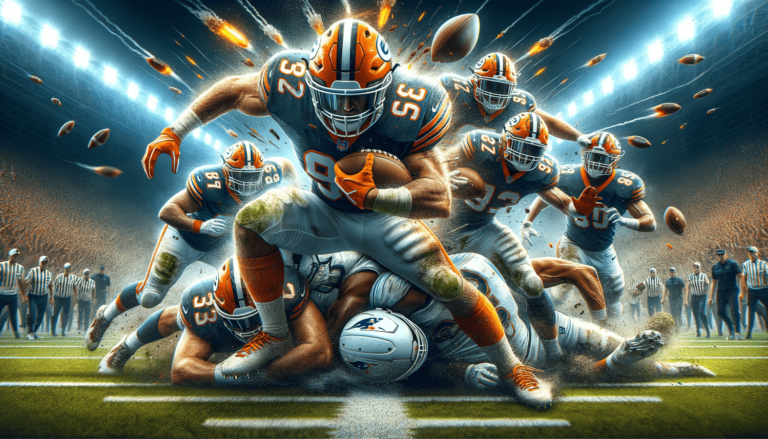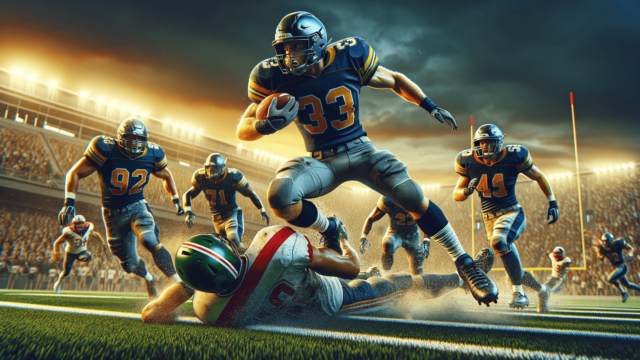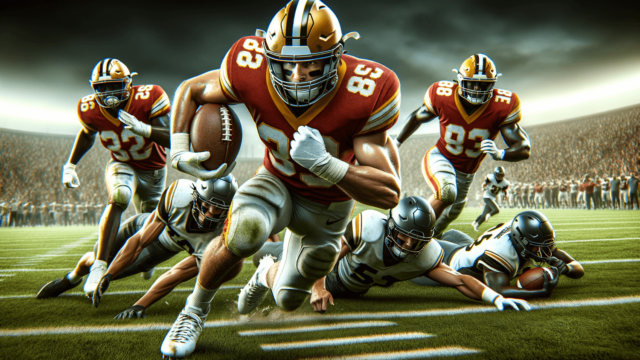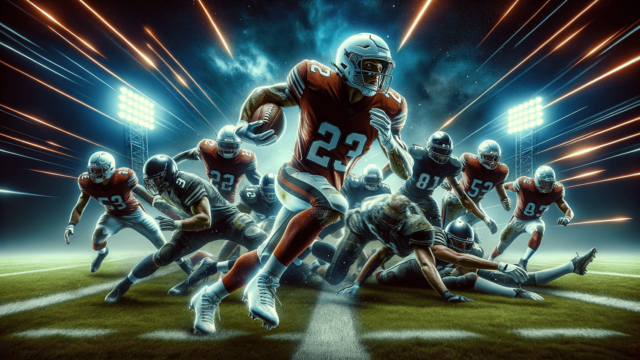
A “stuff” in football refers to a defensive play where a ball carrier is tackled at or behind the line of scrimmage, preventing any offensive gain and potentially causing a loss of yards. Stuffs showcase strong defensive execution and can significantly disrupt an opponent’s offensive rhythm.
Understanding a Stuff in Football
A “stuff” in football is a significant defensive maneuver that plays a vital role in determining the outcome of a game. To better understand what a stuff is, we must first delve into the intricacies of this powerful tactic.
Defining a Stuff
In simplest terms, a stuff occurs when a ball carrier is tackled at or behind the line of scrimmage by a defensive player. This action prevents any offensive gain and often leads to a loss of yards, disrupting the momentum of the opposing team.
Key Elements of a Stuff in Football
Several factors contribute to the successful execution of a stuff. Understanding these elements can help players, coaches, and fans better appreciate this aggressive defensive play.
Tackling Technique
Proper tackling technique is crucial for a successful stuff. Defensive players must maintain good body position, using their shoulder pads rather than their arms to tackle a ball carrier. This aids in applying maximum force to stop forward progress.
Defensive Line Penetration
To effectively execute a stuff, defensive linemen need to penetrate the offensive line, neutralizing blocking schemes. By disrupting the offense’s timing, defenders create opportunities to stop the ball carrier at or behind the line.
Recognition and Reaction
Defensive players must quickly recognize and react to the offensive play. Rapid decision-making paired with swift action is essential in achieving a stuff. Communication among defenders also plays an instrumental role in its success.
Significance of Stuffs in Football
A successfully executed stuff can alter the course of a game. Through consistently effective defense, dominant teams establish and maintain control over their opponents.
Swinging Momentum
Stopping an offense at or behind the scrimmage line often swings momentum in favor of the defense, potentially leading to forced turnovers, punts, or missed field goals.
Strategic Impact
Repeated stuffs alter an opposing team’s offensive plans, forcing them to rely on longer pass attempts. This exposes vulnerabilities and increases the likelihood of interceptions or sacks, granting the defensive team further opportunities to take control.
The Role of Individual Positions in a Stuff
Each defensive position plays a critical role in executing a successful stuff. A thorough understanding of these roles allows both players and fans to appreciate the strategy and skill involved in this critical defensive play.
Defensive Linemen
Defensive linemen are responsible for penetrating the offensive line, ensuring a disruption in the ball carrier’s progress. By taking on multiple blockers, they create a path for linebackers to make the pivotal tackle.
Linebackers
Linebackers play an instrumental role in executing a stuff by analyzing and reacting to offensive plays. Swift recognition of a run play allows the linebackers to fill gaps, preventing the ball carrier from gaining any yards.
Defensive Backs
Though primarily responsible for pass coverage, defensive backs may also contribute to a stuff. As part of their run support duties, these players can make critical tackles if the ball carrier breaks through the first line of defense.
Effective Drills for Practicing Stuffs
To excel in their roles and execute successful stuffs, players must engage in targeted, high-intensity training. The following drills will help teams develop the requisite skills.
Angle Tackling Drills
These drills teach proper tackling form, focusing on using shoulder pads and maintaining correct body position. Angle tackling drills are designed to help players develop the technique needed to stop a ball carrier effectively.
One-on-One Block Shedding Drills
Building strength and skill in shedding blockers is essential for executing successful stuffs. One-on-one drills between defensive linemen and offensive linemen help defensive players refine their technique and improve their ability to disrupt the offensive line.
Gap Filling Drills
These drills train linebackers to quickly read and react to run plays, honing their skill in filling gaps and stopping ball carriers. Gap filling drills emphasize speed, agility, and decision-making.
Measuring the Success of Stuffs
While basic statistics might not fully capture the impact of stuffs, advanced metrics can provide insight into a defense’s effectiveness in this area.
Stuffed Run Rate
Stuffed run rate is the percentage of run plays where a ball carrier is tackled at or behind the line of scrimmage. This metric helps gauge defenses’ success in stopping opponents’ rushing attacks.
Tackles for Loss
The total number of tackles for loss, which includes stuffs and tackles on passing plays, reveals the ability of a defense to penetrate opponents’ backfields and disrupt their game plans.
FAQs for “What is a Stuff in Football?”
In this section, we have compiled some frequently asked questions that arise after reading the blog post, ‘What is a Stuff in Football?’. These will help clarify any remaining doubts and further expand your understanding of this important defensive play.
What defensive positions contribute most to executing a stuff?
Defensive linemen and linebackers play the most significant roles in executing a stuff. Linemen penetrate the offensive line, while linebackers quickly identify run plays and fill gaps to prevent ball carriers from gaining yards.
How do stuffs contribute to a defense’s overall success?
Stuffs swing momentum in favor of the defense, prevent the offense from gaining yardage, and disrupt their overall game plan, forcing them to adopt riskier strategies like longer pass attempts which may lead to interceptions or sacks.
What drills should defensive players practice to improve their ability to execute stuffs?
Some effective drills for practicing stuffs include angle tackling drills (to build proper tackling technique), one-on-one block shedding drills (to help defensive linemen disrupt the offensive line), and gap filling drills (to train linebackers on quickly identifying and reacting to run plays).
What advanced metrics can be used to measure the effectiveness of stuffs?
Metrics such as stuffed run rate and tackles for loss can provide a more in-depth assessment of a defense’s success in executing stuffs. Stuffed run rate measures the percentage of run plays stopped at or behind the line of scrimmage, while tackles for loss indicate the defense’s overall ability to disrupt opponents’ game plans.
How can an offense counter the threat of stuffs during a game?
An offense can counter stuffs by using various strategies, such as mixing in different run plays or incorporating more quick passes in their game plan. This makes it difficult for the defense to predict the plays, which reduces the likelihood of successful stuffs.
Featured Posts
- No pillar pages found.





